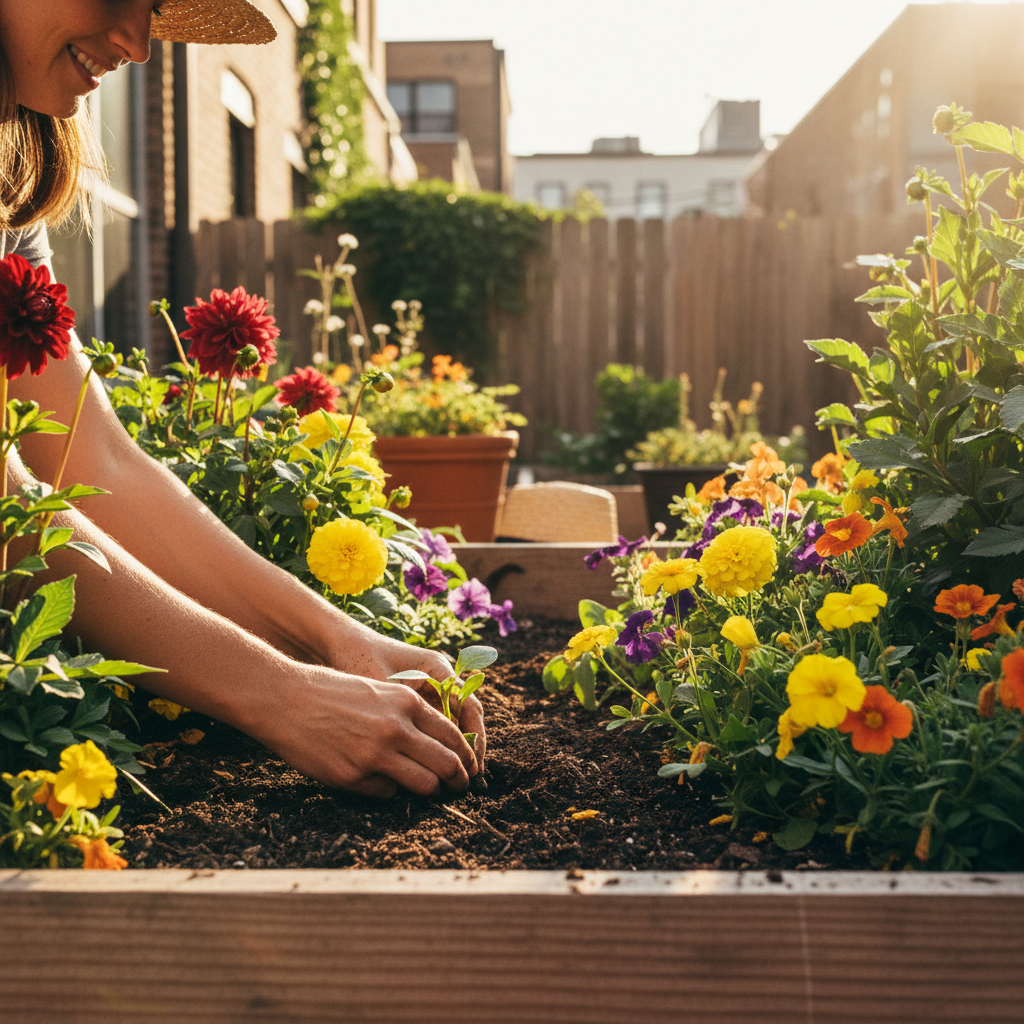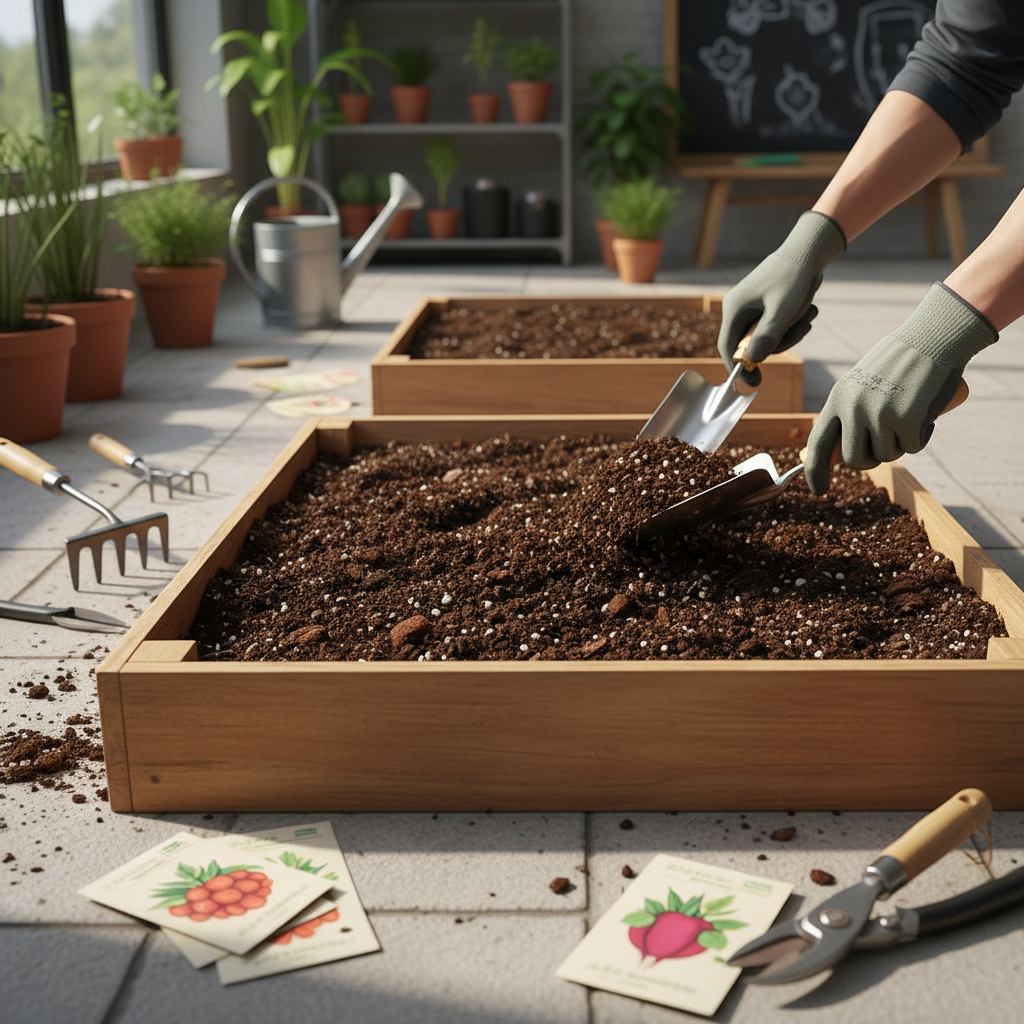
Table of Contents
Introduction
Imagine transforming a small patch of urban space or an uneven backyard into a lush, productive garden that flourishes with minimal effort and maximum yield. Raised bed gardening has surged in popularity for precisely this reason, offering an innovative yet accessible way to cultivate plants effectively. Whether you’re a novice green thumb or an experienced gardener looking to improve your techniques, understanding the advantages of raised bed gardening can open exciting new opportunities for home cultivation and urban agriculture.
The appeal of raised bed gardening lies not only in its versatility but also in its ability to address common growing challenges. Many gardeners face issues ranging from poor soil quality and drainage to limited access and mobility. With raised beds, these obstacles can be significantly reduced, if not entirely eliminated. For example, customizing soil composition lets gardeners tailor the nutrient profile for specific plant needs, fostering healthier roots and superior growth. Moreover, raised beds tend to warm up quicker in the spring and retain heat longer into the fall, extending the growing season for those eager to maximize their harvest.
As urban areas expand and outdoor space becomes more precious, raised bed gardening offers a practical solution that fits balcony corners, rooftops, or compact yards without compromising productivity. It’s also increasingly appreciated among gardeners who have physical limitations, as the elevated height reduces the strain of bending or kneeling. This method combines accessibility with efficiency, empowering a wider range of people to engage in gardening activities enjoyably and successfully.
In our exploration of raised bed gardening, addressing soil control, drainage, accessibility, and pest management reveals a comprehensive approach to optimizing plant health and garden convenience. If you’re new to gardening, consider starting with essential gardening tips for beginners that lay a strong foundation for your gardening journey. Many gardeners also find value in understanding how soil types and conditions influence growth, which directly ties into how raised beds can be customized for the best results.
What You’ll Learn in This Guide
This guide is designed to equip you with a thorough understanding of raised bed gardening and how it can transform your gardening experience. From soil customization to pest control, we’ll cover the essential benefits and practical considerations that make raised beds so advantageous.
- Enhanced Soil Control: Learn how raised beds allow you to select and tailor soil mixtures to fit your plants’ unique nutritional needs, improving fertility and soil structure for stronger growth.
- Improved Drainage: Discover how elevating your garden beds prevents waterlogging, protects roots from rot, and enables planting in areas with poor natural drainage conditions.
- Ease of Access and Maintenance: Understand how raised beds reduce physical strain during planting, weeding, and harvesting, making gardening more accessible for people with mobility challenges.
- Pest and Weed Management: Explore how raised beds can help minimize weed growth and create more effective environments for managing pests, contributing to healthier plants and higher yields.
Throughout this article, you’ll not only gain insight into the numerous advantages of raised bed gardening but also practical tips on materials, cost considerations, and when raised beds are the optimal choice for your garden. We’ll guide you through scenarios where raised beds excel, such as in compact spaces or challenging soil conditions, so you can confidently decide if this method suits your gardening goals.
We will also delve into strategies that enhance the growing season, allowing you to get an earlier start and enjoy a prolonged harvest period. By the end of this guide, you’ll understand key maintenance benefits and how to balance initial investment costs with long-term garden productivity. Gardening can be a joyful and rewarding pursuit, and with raised beds, it becomes more manageable, efficient, and fruitful.
So, if you’re ready to elevate your gardening game—literally and figuratively—dive into this detailed exploration of raised bed gardening. Your plants, your schedule, and your body will thank you as you discover how this gardening technique offers a perfect blend of practicality and productivity. Let’s embark on this journey toward a thriving garden space that fits your lifestyle and cultivates success in every season.

Raised bed gardening has seen a surge in popularity among home gardeners and urban growers alike due to its numerous advantages over traditional gardening methods. As urban spaces shrink and soil quality becomes more unpredictable, raised beds offer a controlled environment that makes cultivating plants more accessible and productive. This method provides gardeners with greater control over soil conditions, water management, and garden accessibility, making it an ideal choice for people looking to maximize their gardening success in limited spaces. In this discussion, we will dive deeper into the key benefits of raised bed gardening including better soil control and improved drainage, two foundational aspects that contribute significantly to healthier and more fruitful gardens.
Better Soil Control
One of the primary advantages of raised bed gardening is the ability it gives gardeners to customize and control the soil quality. Unlike traditional garden plots that rely on the existing ground soil, raised beds are constructed above the ground, allowing for the addition of high-quality soil blends tailored to specific plant needs. This customization is particularly beneficial in urban environments or areas where native soil is poor, contaminated, or compacted. The control over soil composition means gardeners can enrich the beds with organic matter, nutrients, and amendments that promote optimal plant growth.
Moreover, raised beds help prevent soil compaction — a common problem in conventional gardening due to foot traffic — by confining foot traffic to walking paths around beds. This keeps the soil loose and aerated, supporting healthier root systems and better water absorption. Additionally, because the soil is contained and elevated, drainage can be more easily managed, enhancing overall soil fertility and structure. To fully grasp this concept, it helps to understand foundational gardening principles like those covered in essential gardening tips for beginners.
Key Aspects of Better Soil Control
The ability to control soil quality involves multiple considerations that together create a superior growing environment. Here are some of the key benefits:
- Addition of Organic Matter and Nutrients: Gardeners can tailor soil mixtures by adding compost, manure, peat moss, or other organic materials to meet specific nutritional requirements of the plants being grown. This targeted enrichment supports vigorous plant health and higher yields.
- Prevention of Soil Compaction: Raised beds minimize walking within the planting area, which preserves soil structure and promotes healthy root expansion. This results in plants that can access nutrients and water more efficiently.
- Improved Soil Structure and Fertility Management: Controlled soil environments allow for regular adjustments to soil pH, texture, and nutrient levels, ensuring ideal conditions year-round. This is particularly useful in areas with naturally poor or degraded soil.
Improved Drainage
Proper water management is crucial to plant health, and raised bed gardening excels in providing improved drainage compared to traditional ground-level gardens. By elevating the soil above the surrounding ground, raised beds encourage water to flow through more freely, preventing the accumulation of excess moisture that can lead to root rot and other water-related diseases. This is especially important in regions that experience heavy rainfall or where the native soil has poor natural drainage properties.
Additionally, raised beds enable gardeners to plant in areas that would otherwise be unsuitable for gardening due to waterlogging or clay-heavy soil. The increased drainage reduces soil water saturation, which benefits root oxygenation and overall plant vigor. For a detailed breakdown of soil drainage advantages and how they enhance garden success, gardeners will find it useful to consult resources such as gardening tips for beginners that touch on water management fundamentals.
Drainage Advantages of Raised Beds
The benefits of improved drainage with raised beds cover several important aspects of plant health and garden management:
- Prevention of Root Rot and Water-Related Problems: Excess water often leads to fungal infections and root decay. Raised beds reduce this risk by ensuring roots are not sitting in saturated soil for prolonged periods.
- Enabling Gardening in Poorly Drained Areas: Gardens can be established on sites where natural drainage is insufficient, such as clay-heavy plots or regions prone to flooding, thus expanding gardening opportunities.
- Maintenance of Soil Aeration During Heavy Rains: Even during heavy rainfall, raised beds promote quick drainage which keeps soil from becoming overly saturated and compacted, aiding root respiration and soil microorganism activity.

Conclusion
Raised bed gardening offers a transformative approach for both novice and experienced gardeners looking to optimize their growing spaces. By allowing precise control over soil quality and composition, gardeners can create an ideal environment tailored to the unique needs of their plants. This level of customization not only supports robust root development and nutrient uptake but also helps maintain better soil structure, which is often difficult to achieve in traditional ground-level gardens. Additionally, raised beds improve drainage, which is crucial for preventing common issues like root rot and waterlogging, especially in areas with dense or poorly draining soils.
Another significant advantage of raised bed gardening is the ease it brings to garden maintenance. The elevated height reduces the need for frequent bending or kneeling, making the gardening experience more accessible and less physically taxing. This benefit is particularly valuable for older gardeners or those with limited mobility. Moreover, raised beds can extend the growing season by warming up faster in spring and retaining heat longer into fall, allowing gardeners to start planting earlier and enjoy a longer harvest period. With pest and weed control also enhanced by the structured and contained planting area, raised beds support healthier plants and often result in higher yields.
When considering starting a raised bed garden, it’s essential to plan with materials, bed depth, and location in mind. Using quality soil mixes enriched with organic matter will maximise benefits, while selecting durable construction materials will ensure longevity and ease of maintenance. Raised beds also suit various scenarios—from compact urban spaces to uneven terrain—making them a flexible solution for many gardeners. Whether you have limited space, poor native soil, or accessibility concerns, raised bed gardening can make cultivating thriving plants easier and more enjoyable.
To get started with raised bed gardening, begin with assessing your available space and selecting a suitable bed size that fits your needs. Invest time in preparing custom soil blends tailored to the types of plants you want to grow, focusing on nutrient-rich and well-draining substrates. Plan your watering schedule carefully to accommodate the faster drainage of raised beds, and implement pest management practices such as mulching and targeted interventions to protect your crops. Keep your garden organized by regularly weeding and maintaining pathways to ensure easy access and tidy conditions.
Embracing raised bed gardening empowers you to overcome common gardening challenges and unlock your garden’s full potential. With enhanced soil conditions, improved drainage, and accessible design, raised beds offer a practical, productive, and enjoyable gardening experience. Whether you grow vegetables, herbs, or flowers, this method supports healthier plants and greater yields with less effort. We encourage you to explore the possibilities of raised bed gardening and experience the rewarding satisfaction of nurturing your own vibrant garden year-round.
